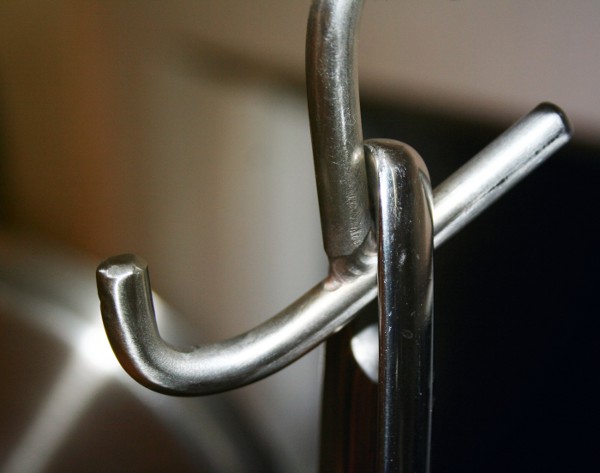



When we were married some friends bought us a very nice set of aluminium core stainless steel pots and pans. These things are really handy for cooking food. Plus they look really pretty! What they are not handy for, however, is storage. They don't stack well, the lids are always in the way, and they are generally a pain to get out and a pain to put back. In addition, whenever we clean them they take up a ton of space while they are drying. To solve this problem, I present, the pot hanger!
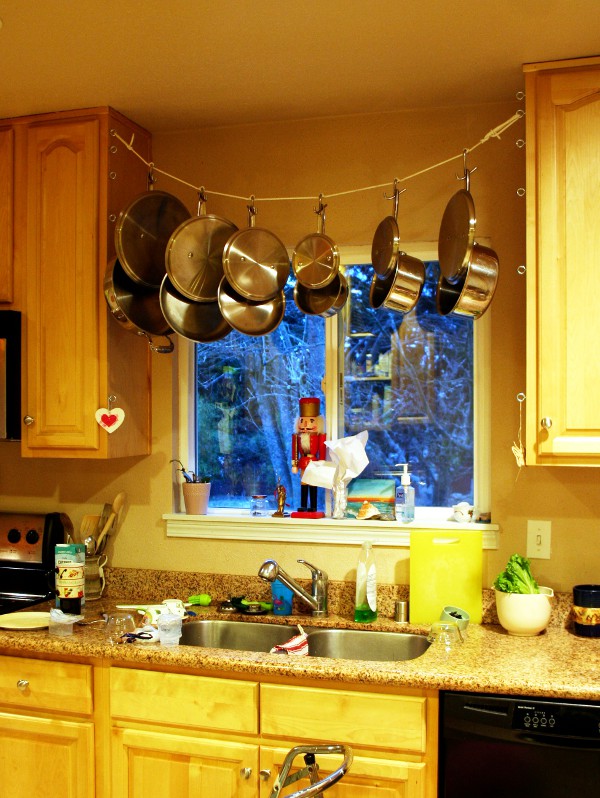
How did I come up with such a design? Through the use of planning and necessity. Allow me to elucidate.
When I first tackled the problem, I was just trying to hang the lids, since those are the most wasteful of storage space. I considered hanging them on the wall from some simple wall hooks, but then through experimentation I discovered that sliding the handle of the lid over the handle of the pot allowed both to be stored efficiently. Of course, this now meant I was trying to store the pots and pans as well as the lid. Ahh feature creep... my old nemesis.
The hole in the pan handles reminded me of some quarter inch 304 stainless steel rod I had laying around from another project. I could make hooks and hang them from the ceiling! Some measurements told me that they wouldn't quite fit inbetween the cabinets over the sink, but maybe if I rotated them? Time to do some 3d modeling!
After making rough models of the pots and pans I threw them in the 3d model of my house (yes, I made a 3d model of my house. It originally started because I was curious about the volumes of various rooms. It's proven handy on multiple occasions now.) and messed with the angles until they fit and looked nice.
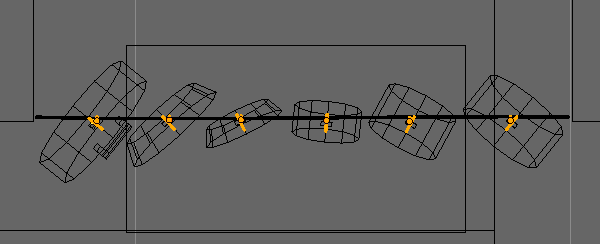
My first idea was to hang them straight down from the roof, like so:
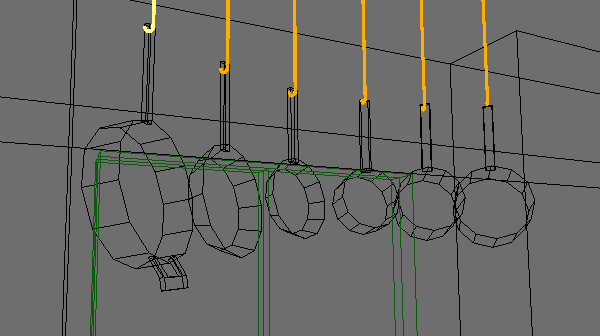
But this design posed several problems. First, it required an estimated 180cm of stainless rod, and I only had 147cm left over. Second, I didn't know how I was going to keep the pans from swinging and hitting eachother. Third, I didn't know how I was going to attach them to the ceiling. How many screws would I need to keep them from pulling out of the drywall? Fourth, and finally, it's simply an ugly and uninspiring design. This indicated a different approach.
As usual, the new approach took the form of tension structures. Why use all that stainless steel when I could use lightweight inexpensive rope instead? Well, I'll tell you why! If you hang the pans straight down they will inevitably spin and clang into each other like the most expensive wind chimes ever mis-designed by an addled engineer, that's why! Not to be deterred, I applied my mental faculties and did some more 3d modeling.
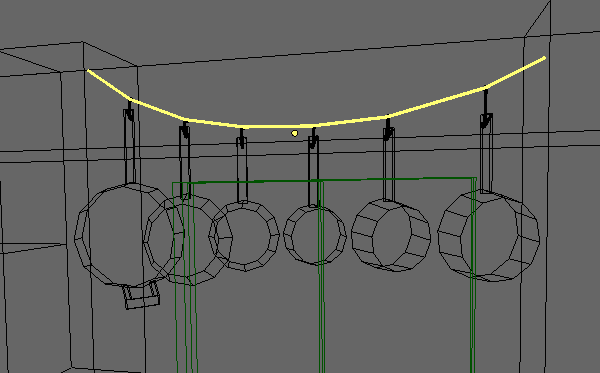
The new design was much more workable, but with a few problems of its own. The first was that my cabinets did not have a series of eye-bolts spaced in the Fibonacci sequence. This first hurdle was quickly remedied. The next was that it required twisted hooks, to keep the pans at the correct angle. I was certain I could overcome this drawback with straight hooks, pliers, and simple brute strength. The last was that I wanted the pans to hang evenly (with their centers in a horizontal line) and rope is notorious for hanging in a curved shape called a catenary. Not only a catenary, but a loaded one! This last required a good deal of recursive trigonometry to solve. That or differential equations. Or maybe algebra.
Too bad I hate math.
Fortunately, I had all the materials at my disposal to simply determine my design through empirical means. By stringing the rope and hanging the pans temporarily from fishing wire (at which point they did, indeed, clang into eachother without ceasing until I draped a hand towel over alternating pans) I was able to measure the precise shape of the loaded rope, input the shape into the 3d model, and directly measure the required hook length. They were all different, of course, but this gave me an idea. Why not weld up my own hooks? That way I could make them just the right angle, just the right length, and just the right shape for what I wanted. Here's the final design I came up with:
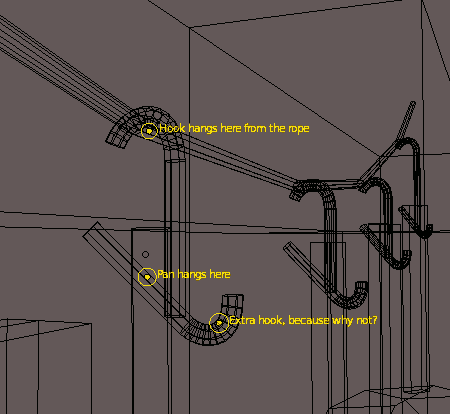
After all that design work, the actual construction went off pretty smoothly. I can use the shop at work, which makes things a lot easier. I learned a good deal about how to make tight bends in thick rod. Mostly this involved a vice and a hammer. Here are a few pictures of how it came out.
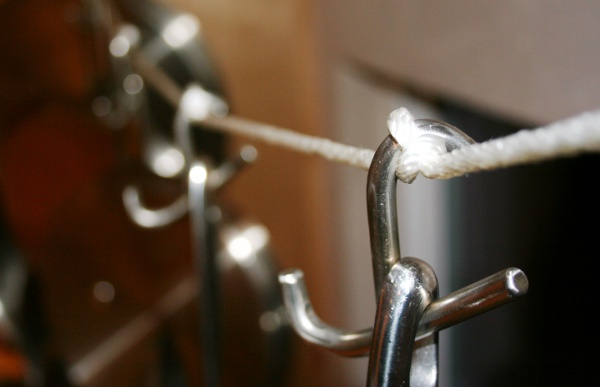
The welds were done with a TIG torch. Not too shabby.
